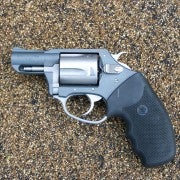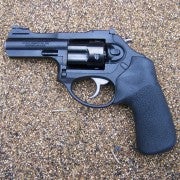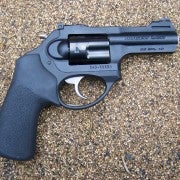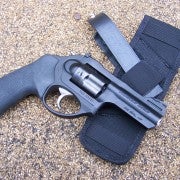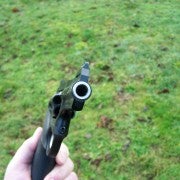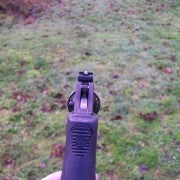Review: Ruger LCRx .38 Special
Pat Cascio 03.16.15
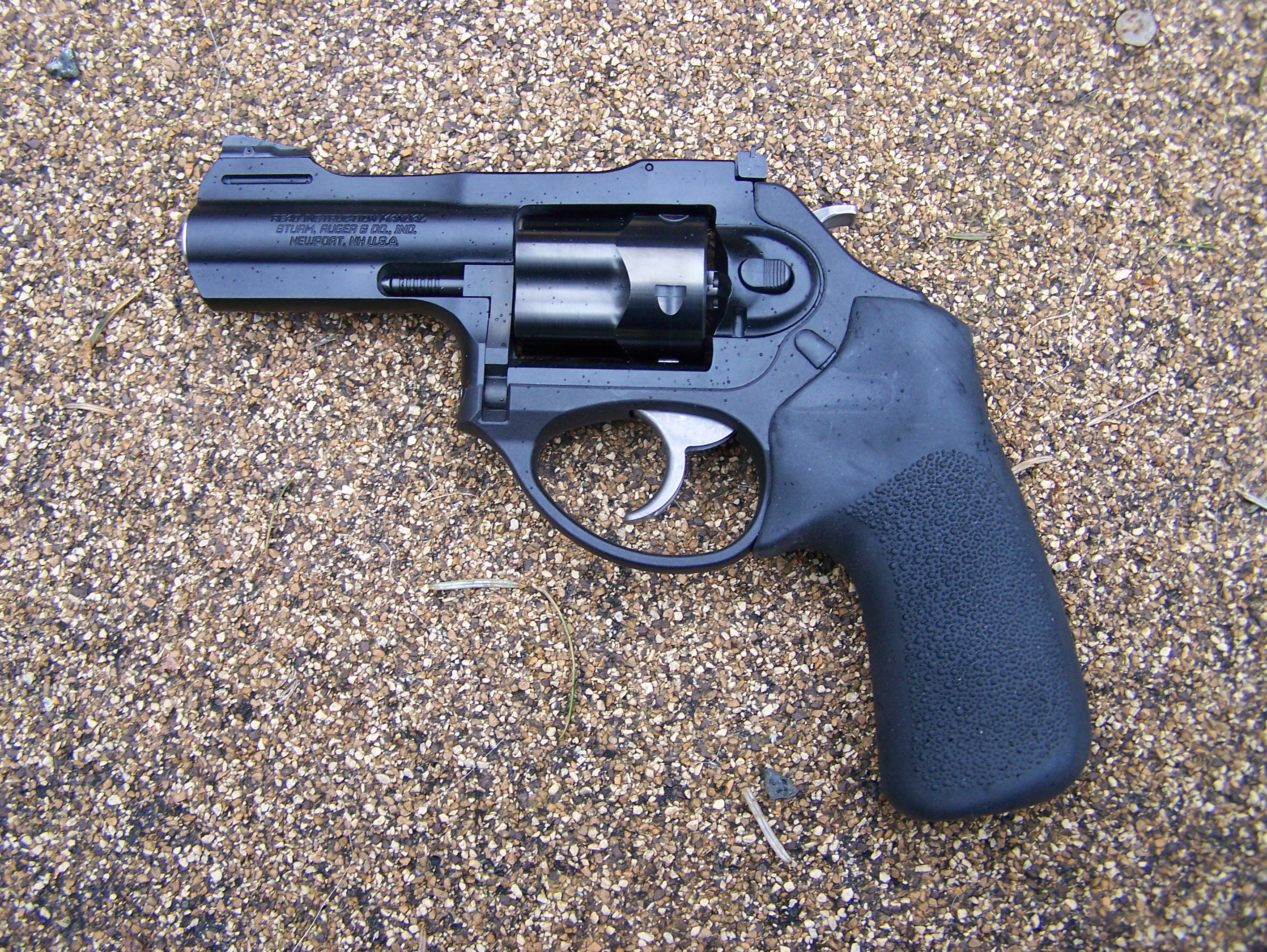
There was a time when I was very much into revolvers, but those days have long gone. Most of my handguns are semiautos now. However, I still have a soft spot for little .38 Special revolvers for some reason. I used to carry little .38 Special snubbies when I did PI work and undercover work–carried ’em in an ankle holster. Ditto for time spent as a cop. It’s nice to have a back-up gun in that line of work.
I received the press release from Ruger on their new LCRx 3″ barrel light-weight, .38 Special revolver, and I was determined to not like it just from the picture. Several years ago, I tested their LCR line-up and liked it a lot. Even the .357 Mag LCR was fun to shoot–just not a full box of .357 Mag at a time; it really kicked. However, there was just “something” about this new LCRx with a 3″ barrel that didn’t appeal to me–until my local gun shop got one in. The street price on the LCRx is around $400, and when I picked it up, it was love at first sight. I had to have one.
The LCR line-up is a rather unique revolver design: part of it is made out of polymer, part aluminum, part steel. I love the Hogue rubber grips on this gun; it gives a full grip, and the grips really tame recoil, not that there’s all that much from a .38 Special to start with. There is a highly visible front sight with a white ramp, and the rear sight is fully adjustable for windage and elevation. The cylinder holds 5 rounds of the hottest .38 Special +P ammo you can stoke in it. Ruger also claims you can replace the white front sight (it’s a simple pinned in affair), but there is no mention on their website about obtaining different colored front sights for this gun. The entire gun is finished in a nice, matte black finish, very business-like. And, unlike the LCR guns, this LCRx has a hammer for cocking for single action shooting; the LCR guns are double-action only.
The barrel on this little gun is stainless steel with the Aluminum shroud surrounding it. The gun’s weight is listed at 15.70-oz empty. The postal scale at the gun shop says it’s dead-on at 16-oz–close enough! The cylinder is made out of high strength stainless steel and is fluted to reduce weight, and it has a Diamondblack finish to it, which is a an ion bond finish that is super-tough.
The trigger is smooth-faced, and I like that on most revolvers; it makes for faster double-action follow-up shots in my humble opinion. And this gun is rated for +P loads, too. Many small revolvers will handle a limited amount of +P shooting, but eventually they shoot loose and need to be rebuilt. But there are no restrictions on this little Ruger on the amount of .38 Special +P can you shoot through it. The gun came in a white box, and inside was the LCRx in a nice soft sided carrying case–nice touch, Ruger!
The double action trigger pull was right about 9 pounds, not too heavy, not too light, but extremely smooth. Back in the day, a person would have paid at least a hundred bucks to have a trigger pull this smooth and light on any revolver. The single action trigger pull was a bit heavy in my humble opinion, but it had a very crisp let-off. This little gun really balances extremely well in the hand, and my wife and both daughters really liked the way it felt in their hands, too.
I received a Charter Arms Undercover .38 Special 2″ barrel snubby as a gift not too long before this Ruger arrived, and I was anxious to compare the two. The Charter Arms also weighed in at 16-oz, but it felt a lot heavier than the Ruger did. Everyone else said the same thing–strange! While the trigger pull (double and single action) on the Charter Arms snubby was okay, it didn’t compare to the trigger pull on the Ruger; Ruger had it beat all the way around.
The Charter Arms has the Ruger beat for concealment; it will carry in an ankle holster, no problem. The 3″ barrel on the Ruger is just too long for ankle carry. However, I see this LCRx shinning as a trail gun for folks out hiking in the boonies. Loaded with the right ammo, it will handle many problems or chores that may arise. The gun is so light-weight, you rapidly forget you are wearing it. I had to keep checking to make sure the gun was still in the Blackhawk belt slide holster I was carrying it in.
I only had a small selection of .38 Special ammo on-hand for testing in this Ruger. From Buffalo Bore Ammunition, I had their 110-gr +P Brnes TAC-XP all-copper hollow point ammo. I also had their “Heavy” 125-gr +P Low Velocity JHP load, their Outdoorsman 158-gr +P hard cast load, and lastly, their Standard Pressure, lead-free 110-gr Barnes TAC-XP all-copper hollow point for testing. This last load was a real pussycat in the Ruger, very little recoil. The Outdoorsman load got my attention. Then again, it is throwing that hard cast 158-gr bullet at over 1,200 FPS, which is right on the heels of many .357 Mag loads. The Heavy +P load wasn’t nearly as bad as I thought it would be, and the 110-gr Barnes +P load wasn’t bad, either. This last load is the one I’d carry for self-defense on the mean streets if I were packing this gun for everyday self-defense use.
Accuracy testing was done at 15-yards, and I used the little Charter Arms snubby side-by-side with the Ruger LCRx to see what they both would do. The 158-gr Outdoorsman load from Buffalo Bore shot a bit higher than the other loads, which was to be expected, as the sights seems to be zeroed from the factory for a 158-gr load. The other loads shot a little bit lower, but not enough to make me adjust the rear sight. With the Charter Arms, no sight adjustments are possible; the fixed rear sight is milled into the top of the gun.
At 15-yards, I could easily keep all my shots under 2-inches with all loads, but the Buffalo Bore 110-gr +P Barnes gave me the best accuracy. There was not a lot of difference between all the loads, but it beat out the rest ever so slightly. I fired single and double action with the Ruger, and the double action groups were a tad bigger than those fired single-action. The super-smooth double action trigger pull really helped keep those rounds going where they were meant to go.
Shooting the Charter Arms both double and single action surprised me in the accuracy department. In single action, the Charter Arms held its own against the Ruger. It was extremely accurate. However, firing double action with the Charter Arms, it couldn’t keep up with the Ruger for accuracy. The double action trigger pull was gritty and heavy. Still, for the intended purpose, this little Charter Arms would do the job. But for my money, the Ruger LCRx is a better gun all the way around. Even though Charter Arms says you can shoot +P ammo in their guns, they caution against it, whereas Ruger has no warnings about +P ammo in their gun.
One really nice thing about .38 Special revolvers is the huge variety of ammo that is available on the market–everything from FMJ to JHP to soft lead round nose rounds to hard cast rounds, and from standard velocity to +P loads. You’re sure to find something that will do the job you want a .38 Special to do.
I hate to admit when I’m wrong, but I was sure wrong about this Ruger LCRx. From the press release I received in an e-mail, I was determined to NOT like this gun, so I didn’t automatically request a sample. However, after handling one at my local gun shop, I immediately fell in love with the little gun. It just felt “right” in my hand, and everyone else who tried it said the same thing. What’s not to like about a little .38 Special compact revolver that would make a dandy self-defense gun or a trail gun when you’re out hiking or camping? And let’s not forget how light-weight this hummer is, too. This one is another home run for Ruger.
